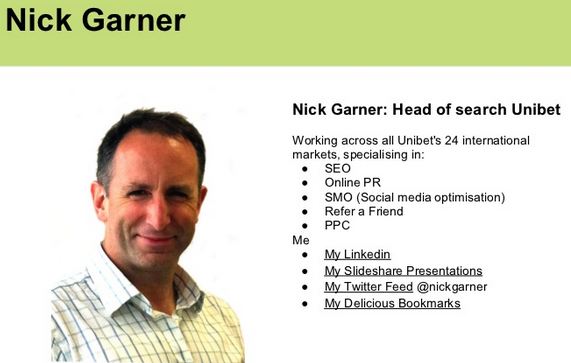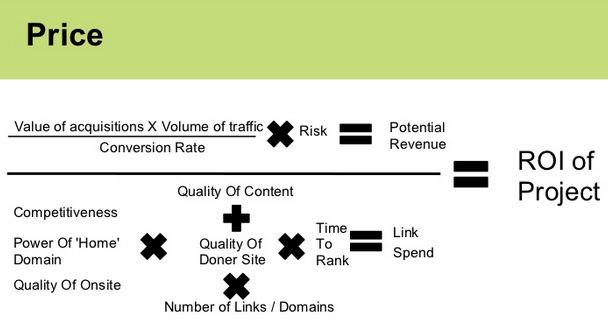On Friday the 14th of September, Tracey and I attended the BrightonSEO conference – you can get our
full roundup here. In the afternoon, we actually found ourselves going to listen to Nick Garner’s talk in the Red Button Room rather than the main auditorium, as someone mentioned he was going to be speaking about link building post penguin.

Nick Garner
Perhaps a slightly controversial talk as Tracey and I came out with differing opinions on his theories, but should we be surprised at the mixed reactions when Nick denied buying links, yet answered a question at the end – “how do you convince site owners to link to you” – with simply “offer money”?
In my opinion, whether we agree with his strategies or not, I think it was one of the most in depth and (almost) honest talks of the day and I’m glad we went to listen. He has posted his slides
here.
Some key points made by Nick included:
- “Think like a human” – target links from sites that humans and Google love
- Plausible Deniability is an important concept – can you claim plausible deniability to a Googler?
- Competitor research – “be like everyone else, but just a little bit better”
The last point on competitor research echoed keynote speaker
Dave Trott’s story of the two men who came across a tiger. The first man stopped to put his Nike Air trainers on and the second guy said “what you doing? Trainers aren’t going to help you outrun a tiger!” To which the first man replied, “I don’t need to outrun the tiger, I just need to outrun you.”
Link building strategy
As for link building strategies, Nick uses 4 P’s to decide where to place links:
1. Place
- No bad noisy sites (sites with lots of bad links)
- Decent indexed sites
- High Majestic SEO AC Rank
- Sites with decent traffic
- Good social noise
2. Placement
- Take top 10 rankers, then take top 20 phrases and use these to vary anchor text
- Natural distribution of anchor text
- Use fresh content (if Google has already cached a page then they’ll know it’s new)
- Placing more importance on links appearing higher on the page
- Right link sources, not networks
3. Pace
- Benchmarking against other sites to decide rate of link acquisition
- Analyse the sites that are closest competitors, generally smaller businesses rather than big brands
- Not going out of the ‘norm’ for number of links being generated to avoid being flagged
- Decide how many links you should target to compete
4. Price
- Working out whether you can afford to compete for a phrase
- Analysing the competition to decide what you’ll need to compete and whether you have the budget for those keywords
Nick even showed us a calculation to work out the ROI of a project. As you can see it’s very straight forward…!

SEO Pricing Model
A lot of the points made by Nick made sense and I feel that he emphasized the fact that as SEOs, we need to be building more quality links in the right places. However, some people may agree or disagree with Nick’s views that, by using his strategies and basically “paying for links” (although not admitted by Nick as such!) – “this sh*t works”.
Did you attend Nick’s presentation? We’d be interested to hear your thoughts on it so please leave a comment below!



